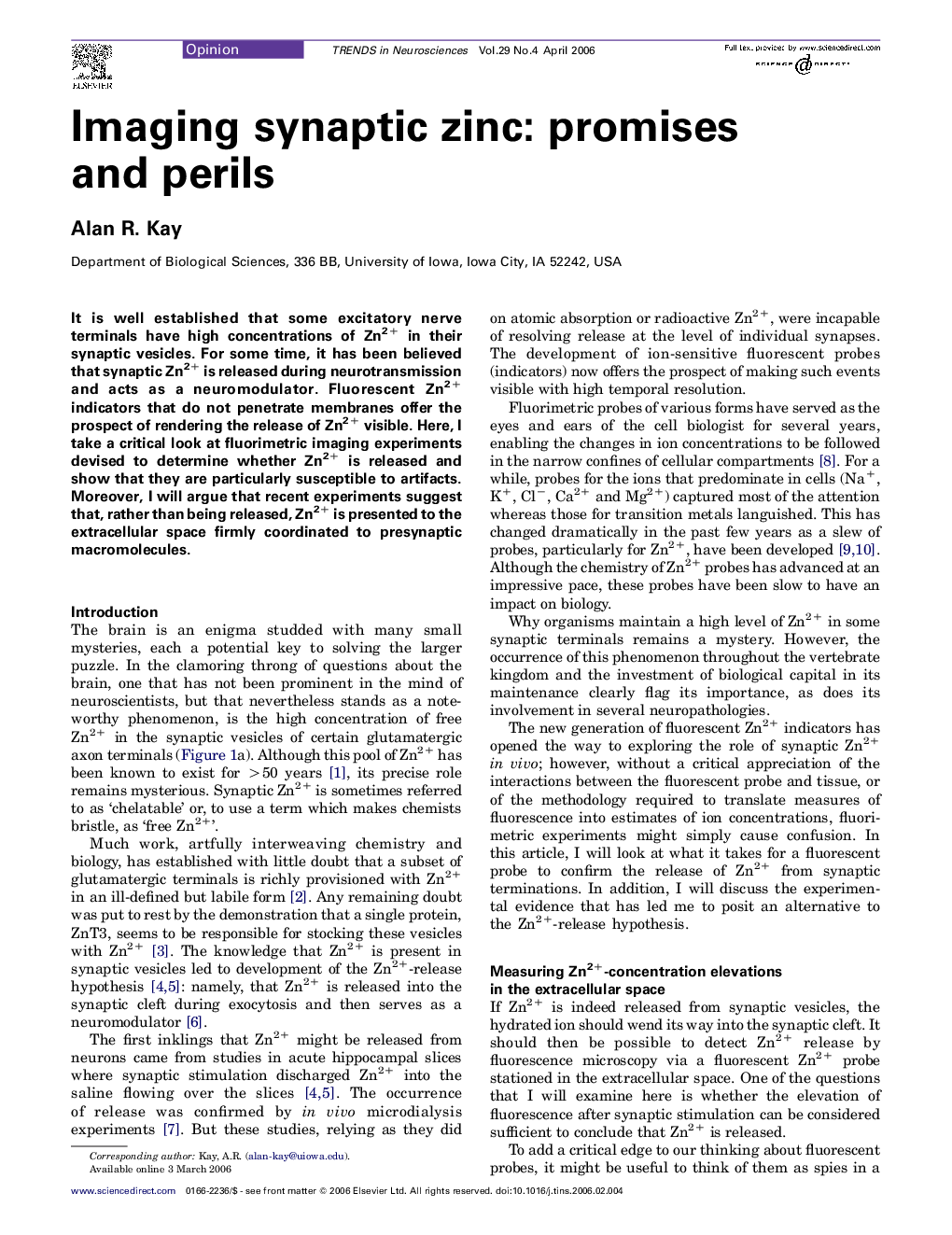| Article ID | Journal | Published Year | Pages | File Type |
|---|---|---|---|---|
| 4354908 | Trends in Neurosciences | 2006 | 7 Pages |
Abstract
It is well established that some excitatory nerve terminals have high concentrations of Zn2+ in their synaptic vesicles. For some time, it has been believed that synaptic Zn2+ is released during neurotransmission and acts as a neuromodulator. Fluorescent Zn2+ indicators that do not penetrate membranes offer the prospect of rendering the release of Zn2+ visible. Here, I take a critical look at fluorimetric imaging experiments devised to determine whether Zn2+ is released and show that they are particularly susceptible to artifacts. Moreover, I will argue that recent experiments suggest that, rather than being released, Zn2+ is presented to the extracellular space firmly coordinated to presynaptic macromolecules.
Related Topics
Life Sciences
Neuroscience
Neuroscience (General)
Authors
Alan R. Kay,
